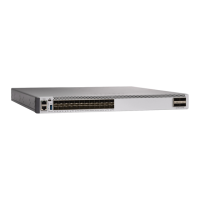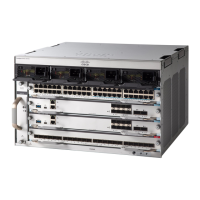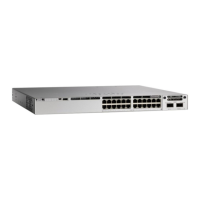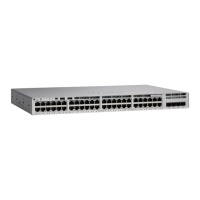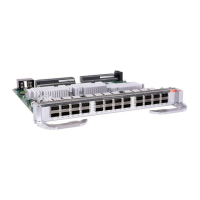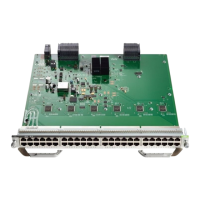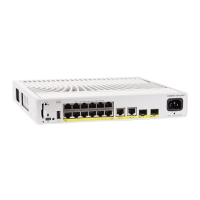Network Components
To configure VRF, you create a VRF table and specify the Layer 3 interface associated with the VRF. Then
configure the routing protocols in the VPN and between the CE and the PE. BGP is the preferred routing
protocol used to distribute VPN routing information across the provider’s backbone. The multi-VRF CE
network has three major components:
• VPN route target communities—lists of all other members of a VPN community. You need to configure
VPN route targets for each VPN community member.
• Multiprotocol BGP peering of VPN community PE routers—propagates VRF reachability information
to all members of a VPN community. You need to configure BGP peering in all PE routers within a
VPN community.
• VPN forwarding—transports all traffic between all VPN community members across a VPN
service-provider network.
VRF-Aware Services
IP services can be configured on global interfaces, and these services run within the global routing instance.
IP services are enhanced to run on multiple routing instances; they are VRF-aware. Any configured VRF in
the system can be specified for a VRF-aware service.
VRF-Aware services are implemented in platform-independent modules. VRF means multiple routing instances
in Cisco IOS. Each platform has its own limit on the number of VRFs it supports.
VRF-aware services have the following characteristics:
•
The user can ping a host in a user-specified VRF.
•
ARP entries are learned in separate VRFs. The user can display Address Resolution Protocol (ARP)
entries for specific VRFs.
How to Configure Multi-VRF CE
Default Multi-VRF CE Configuration
Table 18: Default VRF Configuration
Default SettingFeature
Disabled. No VRFs are defined.VRF
No import maps, export maps, or route maps are defined.Maps
Fast Ethernet switches: 8000 Gigabit Ethernet switches: 12000.
VRF maximum routes
The default for an interface is the global routing table.Forwarding table
Routing Configuration Guide, Cisco IOS XE Everest 16.6.x (Catalyst 9500 Switches)
161
Configuring IP Unicast Routing
How to Configure Multi-VRF CE

